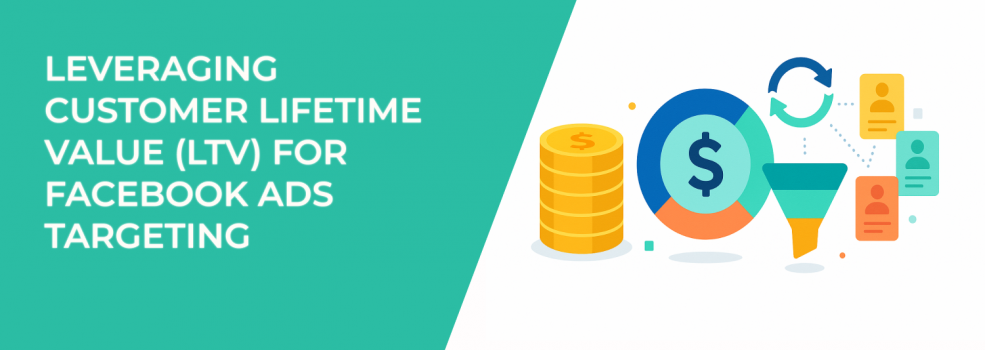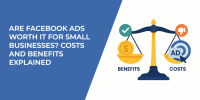If you're spending money on Facebook Ads without factoring in Customer Lifetime Value (LTV), you're likely leaving profit on the table. Most marketers obsess over CTRs, CPCs, and ROAS. But the true power of sustainable growth comes when you shift your focus from cheap conversions to valuable customers.
So how can you use LTV to sharpen your Facebook Ads targeting? Let’s dig in.
What Is LTV and Why Should Facebook Advertisers Care?
Customer Lifetime Value (LTV) measures the total revenue you expect to earn from a customer over the entire relationship — not just a single transaction. In the world of Facebook advertising, LTV unlocks smarter, more profitable targeting.
When you upload LTV-based custom audiences to Facebook, you're essentially telling Meta, "Here are my most valuable customers — go find more like them." And Facebook listens.
But that’s just the start.
Why does this matter? Because not all customers are created equal. Some are one-time buyers, while others become repeat purchasers or loyal subscribers. Knowing who’s who — and targeting accordingly — is what separates average campaigns from high-performance ones.
Key Benefits of Using LTV for Facebook Ads Targeting
Before diving into setup, let’s talk benefits. Understanding how LTV-based targeting can shift your strategy is crucial.
Here’s what it unlocks:
-
Higher-quality Lookalike Audiences: Facebook builds lookalikes based on value, not just behavior, resulting in better-qualified prospects.
-
Smarter budget allocation: Focus more of your spend on acquiring customers who are statistically more likely to bring long-term revenue.
-
Better retention and remarketing strategies: LTV data lets you segment customers for tailored upsell or retention campaigns.
Each of these advantages builds on the other — and when combined, they offer powerful leverage for scaling profitably.
For a full breakdown of how Facebook's audience system works, check out Facebook Ad Targeting 101.
How to Build LTV Audiences for Facebook: Step-by-Step
Getting LTV targeting right means setting a strong foundation. Here’s how to do it.
First, calculate your LTV.
Use this basic formula:
LTV = Average Order Value × Purchase Frequency × Customer Lifespan
Once you’ve calculated LTV, segment your customers based on tiers. This creates clearer signals for Facebook when uploading your data.
Next, prepare your custom audience file. Your CSV should include:
-
Email addresses (or other identifiers);
-
An LTV column, labeled clearly;
-
Other optional identifiers, such as phone number or full name, to improve the match rate.
Then, upload your LTV file into Facebook. When prompted, choose "Customer Value" as your audience type. Facebook will ask which column holds your value data.
Finally, create a Lookalike Audience. Use your LTV audience as the source. Facebook will find people who look like your most valuable customers — not just those who happened to click a link.
For deeper guidance, read Custom vs Lookalike Audiences: What Works Best.
Advanced Tactics: Making the Most of Your LTV Segments
Once you’ve nailed the basics, it’s time to scale smarter. Here’s how marketers can go beyond the initial setup.
Segment Your LTV Data into Buckets
Instead of treating everyone the same, separate customers into high, medium, and low LTV tiers. Then create custom campaigns for each.
This allows for:
-
Tailored creatives: Speak differently to power buyers than to first-timers.
-
Optimized bidding strategies: Bid more aggressively for audiences with higher LTV potential.
-
Layered targeting: Combine LTV with behavior-based custom audiences or retargeting segments.
Combine LTV with Conversion Events
Use Offline Conversions or Facebook’s Conversion API to track purchases beyond the pixel — especially important if you operate offline or across multiple platforms. The more full-funnel data you feed Meta, the better your performance.
Want to learn how to accelerate your optimization process? Check out How to Finish the Facebook Learning Phase Quickly.
Monitor for Delivery Issues
If you're using narrow or niche LTV-based audiences, Facebook might limit delivery. Don’t be surprised if you see the dreaded "Ad Set May Get Zero" warning. In that case, follow this guide: Why You See 'Ad Set May Get Zero' on Facebook and How to Fix It.
The Big Picture: LTV Is a Strategy, Not Just a Metric
Let’s be clear: LTV targeting isn’t a quick hack. It’s part of a long-term strategy.
It shifts your focus from just acquiring leads — to acquiring profitable customers. That kind of shift demands smarter targeting, cleaner data, and better creative.
But once you build your LTV infrastructure, it opens the door to:
-
Smarter segmentation;
-
Better ad performance;
-
More sustainable scaling.
And as platforms evolve, especially with privacy and tracking restrictions, LTV-based audiences become even more valuable. Why? Because value is harder to fake than clicks.
Final Thoughts
If your Facebook Ads are underperforming or feeling stale, it might not be your creative or even your copy. It could be who you're targeting.
LTV gives advertisers a smarter lens — one that aligns ad spend with revenue potential. When you're ready to start thinking like a growth marketer instead of just a media buyer, LTV targeting is where the real work begins.

